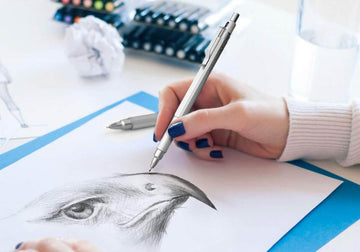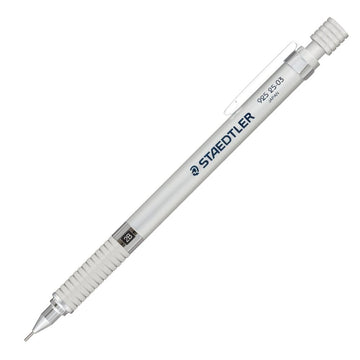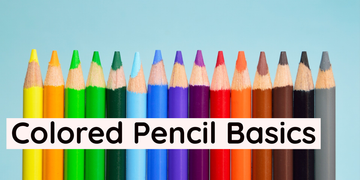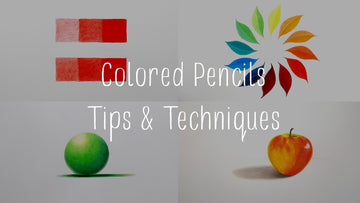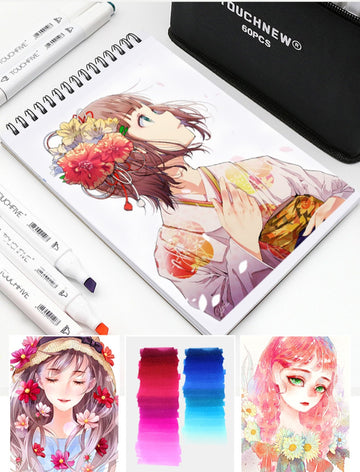
The Complete Beginner’s Guide to Art Markers
Art markers are an exciting and vibrant medium for creative expression. If you’re new to art markers, this comprehensive guide will teach you all about the different types, key brands, essential techniques, and tips for buying your first set.
What Are Art Markers?
Art markers are pens filled with ink that comes in a wide range of colors. They have a tapered tip and are used to draw and color on paper, cardstock, canvas, wood, and other surfaces. Markers contain either dye-based or pigment-based ink.
Dye-based markers contain liquid dye that soaks into paper fibers. This creates vivid, saturated colors perfect for coloring books or graphic art. Dye markers can bleed and spread more.
Pigment-based markers have highly pigmented, acrylic ink that sits on top of surfaces. The ink is water-resistant when dry. Pigment markers work well for layered and blending techniques.
There are three main types of art markers:
Alcohol-Based Markers
The most popular type, alcohol markers have quick drying, blendable alcohol ink. Top brands are Copic, Prismacolor, and Spectrum Noir.
Water-Based Markers
Also called acrylic markers, these contain water-based pigmented ink. They have less odor and are better for kids. Sakura Koi and Tombow Dual Brush Pens are leading water-based brands.
Permanent Markers
These contain oil-based ink that adheres permanently onto surfaces. Sharpie and Prismacolor Illustration markers are popular choices.
Key Brands of Art Markers
Here are some of the major art marker brands to know about:
- Copic: Alcohol-based markers known for their wide selection of colors, vibrancy, and blending ability. Used by professionals but expensive.
- Prismacolor: High quality dye and pigment markers suitable for beginners and up. Affordable and accessible.
- Spectrum Noir: Alcohol markers created for cardmaking and paper crafts. Affordable alternative to Copics.
- Tombow Dual Brush Pens: Water-based pens with dual fine tip and brush tip for versatility
- Sakura Koi: Water-based brush pens vibrant translucent colors perfect for coloring books.
- Sharpie: Classic permanent markers good for bold outlines and writing.
Essential Art Marker Techniques
Here are some basic techniques to help you make the most of your markers:
- Coloring: Fill in an area with solid, uniform color. Try varying pressure for darker and lighter shades.
- Layering: Apply colors on top of each other once dried to blend and create dimension. Slowly build from light to dark.
- Blending: While ink is still wet, gently overlap and mix colors to subtle gradient transitions.
- Stippling: Create texture and values by dotting small sporadic marks repeatedly.
- Crosshatching: Draw layers of intersecting lines to gradually deepen shadows and tones.
- Contouring: Use darker liner markers to add definition and contours around objects and figures.
Buying Your First Art Marker Set
Here are some tips for choosing your first markers:
- Pick dye-based or pigment-based depending on your needs. Dye for coloring, pigment for blending.
- Choose a starter set with 6-24 colors in a range of primaries, neutrals, and some appealing brights.
- Look for sets that offer a selection of tip styles like fine, brush, and chisel shapes.
- Alcohol markers are a good investment. But water-based or cheaper brands are fine for beginners.
- Buy a few blender markers to help smooth and fade colors.
- Choose archival quality ink if you want permanent, fade-resistant results.
- Consider portability if you want markers for sketching outdoors.
- Pick a carrying case that keeps markers organized.
Caring for Your Markers
To extend the life of your art markers:
- Store horizontally to keep ink evenly distributed and prevent clogging
- Close caps tightly so markers don't dry out
- Clean nibs occasionally with isopropyl alcohol on a lint-free cloth
- Don't submerge water-based markers in water for long periods to prevent corrosion
- Replace marker caps and store properly after each use
- Don't leave markers uncapped for more than a few minutes at a time
Art Marker Paper Recommendations
Marker paper makes a difference! For best results, choose:
- Thicker paper around 100lb or more to prevent bleeding
- Smoother, non-fibrous paper so ink glides and adheres
- Lightly textured or tooth paper helps grab ink with some brands
- Acid-free and archival quality for preserving finished pieces
- Brands like Canson, Strathmore, Legion, and Neenah have good marker pads
Safety Tips for Art Markers
Take these basic safety precautions when using markers:
- Work in a well-ventilated area, especially with alcohol markers
- Avoid inhaling fumes directly
- Keep out of reach of young children
- Alcohol ink is flammable, so avoid open flames or heaters
- Wash skin after use as some inks can stain
- Double check markers are non-toxic if using with kids
Now You’re Ready to Start Markering!
As you can see, art markers are an exciting medium with so much creative potential. Start simple as you get comfortable with the basics. Experiment, practice techniques, combine colors, and just have fun with your markers! The more you use them, the more you’ll discover your own style. Markers are a tool for limitless artistic expression.
Art markers are an exciting and vibrant medium for creative expression. If you’re new to art markers, this comprehensive guide will teach you all about the different types, key brands, essential techniques, and tips for buying your first set.
What Are Art Markers?
Art markers are pens filled with ink that comes in a wide range of colors. They have a tapered tip and are used to draw and color on paper, cardstock, canvas, wood, and other surfaces. Markers contain either dye-based or pigment-based ink.
Dye-based markers contain liquid dye that soaks into paper fibers. This creates vivid, saturated colors perfect for coloring books or graphic art. Dye markers can bleed and spread more.
Pigment-based markers have highly pigmented, acrylic ink that sits on top of surfaces. The ink is water-resistant when dry. Pigment markers work well for layered and blending techniques.
There are three main types of art markers:
Alcohol-Based Markers
The most popular type, alcohol markers have quick drying, blendable alcohol ink. Top brands are Copic, Prismacolor, and Spectrum Noir.
Water-Based Markers
Also called acrylic markers, these contain water-based pigmented ink. They have less odor and are better for kids. Sakura Koi and Tombow Dual Brush Pens are leading water-based brands.
Permanent Markers
These contain oil-based ink that adheres permanently onto surfaces. Sharpie and Prismacolor Illustration markers are popular choices.
Key Brands of Art Markers
Here are some of the major art marker brands to know about:
- Copic: Alcohol-based markers known for their wide selection of colors, vibrancy, and blending ability. Used by professionals but expensive.
- Prismacolor: High quality dye and pigment markers suitable for beginners and up. Affordable and accessible.
- Spectrum Noir: Alcohol markers created for cardmaking and paper crafts. Affordable alternative to Copics.
- Tombow Dual Brush Pens: Water-based pens with dual fine tip and brush tip for versatility
- Sakura Koi: Water-based brush pens vibrant translucent colors perfect for coloring books.
- Sharpie: Classic permanent markers good for bold outlines and writing.
Essential Art Marker Techniques
Here are some basic techniques to help you make the most of your markers:
- Coloring: Fill in an area with solid, uniform color. Try varying pressure for darker and lighter shades.
- Layering: Apply colors on top of each other once dried to blend and create dimension. Slowly build from light to dark.
- Blending: While ink is still wet, gently overlap and mix colors to subtle gradient transitions.
- Stippling: Create texture and values by dotting small sporadic marks repeatedly.
- Crosshatching: Draw layers of intersecting lines to gradually deepen shadows and tones.
- Contouring: Use darker liner markers to add definition and contours around objects and figures.
Buying Your First Art Marker Set
Here are some tips for choosing your first markers:
- Pick dye-based or pigment-based depending on your needs. Dye for coloring, pigment for blending.
- Choose a starter set with 6-24 colors in a range of primaries, neutrals, and some appealing brights.
- Look for sets that offer a selection of tip styles like fine, brush, and chisel shapes.
- Alcohol markers are a good investment. But water-based or cheaper brands are fine for beginners.
- Buy a few blender markers to help smooth and fade colors.
- Choose archival quality ink if you want permanent, fade-resistant results.
- Consider portability if you want markers for sketching outdoors.
- Pick a carrying case that keeps markers organized.
Caring for Your Markers
To extend the life of your art markers:
- Store horizontally to keep ink evenly distributed and prevent clogging
- Close caps tightly so markers don't dry out
- Clean nibs occasionally with isopropyl alcohol on a lint-free cloth
- Don't submerge water-based markers in water for long periods to prevent corrosion
- Replace marker caps and store properly after each use
- Don't leave markers uncapped for more than a few minutes at a time
Art Marker Paper Recommendations
Marker paper makes a difference! For best results, choose:
- Thicker paper around 100lb or more to prevent bleeding
- Smoother, non-fibrous paper so ink glides and adheres
- Lightly textured or tooth paper helps grab ink with some brands
- Acid-free and archival quality for preserving finished pieces
- Brands like Canson, Strathmore, Legion, and Neenah have good marker pads
Safety Tips for Art Markers
Take these basic safety precautions when using markers:
- Work in a well-ventilated area, especially with alcohol markers
- Avoid inhaling fumes directly
- Keep out of reach of young children
- Alcohol ink is flammable, so avoid open flames or heaters
- Wash skin after use as some inks can stain
- Double check markers are non-toxic if using with kids
Now You’re Ready to Start Markering!
As you can see, art markers are an exciting medium with so much creative potential. Start simple as you get comfortable with the basics. Experiment, practice techniques, combine colors, and just have fun with your markers! The more you use them, the more you’ll discover your own style. Markers are a tool for limitless artistic expression.

